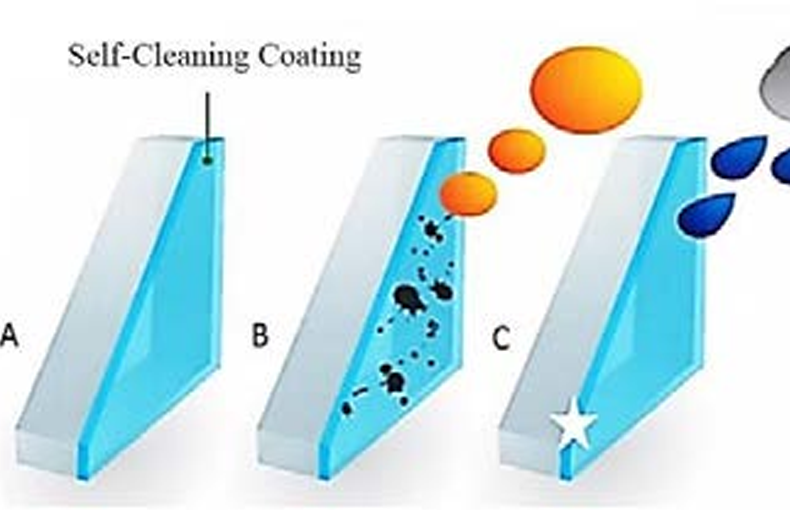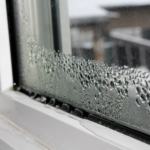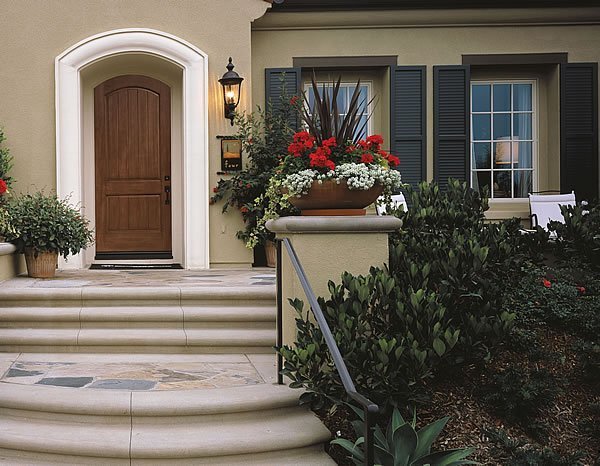What is A Self-Cleaning Glass
Self-cleaning glass is a specific type of glass with a surface that keeps itself free of dirt and grime.
The field of self-cleaning coatings on glass is divided into two categories: hydrophobic and hydrophilic. These two types of coating both clean themselves through the action of water, the former by rolling droplets and the latter by sheeting water that carries away dirt.
Hydrophilic coatings based on Titania (Titanium dioxide), however, have an additional property: they can chemically break down absorbed dirt in sunlight. These coatings when exposed to light, a process known as photocatalysis.
Titanium dioxide has become the material of choice for self-cleaning windows, and hydrophilic self-cleaning surfaces in general, because of its favorable physical and chemical properties. Not only is titanium dioxide highly efficient at photocatalysing dirt in sunlight and reaching the superhydrophilic state, it is also non-toxic, chemically inert in the absence of light, inexpensive, relatively easy to handle and deposit into thin films and is an established household chemical that is used as a pigment in cosmetics and paint and as a food additive.
This coating acts to clean the window in two stages, using two distinct properties: photocatalysis and hydrophilicity. In sunlight, photocatalysis causes the coating to chemically break down organic dirt adsorbed onto the window. When the glass is wet by rain or other water, hydrophilicity reduces contact angles to very low values, causing the water to form a thin layer rather than droplets, and this layer washes dirt away. The mechanism of cleaning is illustrated simply in the following four steps;
1. Conversion of Ti4+ sites to Ti3+ and releasing electrons when UV light (the yellow arrow) shines on the titanium dioxide coating.
2. These electrons attack to the water molecules (H2O) in the air and convert them into hydroxyl radicals (OH·). These hydroxyl radicals are highly reactive and short-lifetime.
3. When these high reactive hydroxyl radicals attack the organic molecules, an oxidation reaction occurs and these organic molecules convert into smaller, harmless substances such as carbon dioxide and water.
4. The hydroxyl radicals also make the glass hydrophilic. When it rains, water molecules spread evenly across it and wipe it clean.
When self-cleaning glass has been stored in a warehouse for a long period prior to installation, it may take up to seven days to become fully activated. This is because the activation of the glass occurs via a chemical reaction between UV rays from natural daylight, oxygen and the coating. After then, it will continue to work as long as it’s exposed to daylight, even in dull winter weather.
The Pilkington Activ™ brand by Pilkington is claimed by the company to be the first self-cleaning glass. Pilkington Activ™ consists of a 20–30 nm layer of nanocrystalline anatase titanium dioxide deposited by an atmospheric pressure chemical vapor deposition technique onto soda-lime silicate float glass.
The SunClean™ brand by PPG Industries also uses a coating of titanium dioxide, applied by a patented process.
The Neat Glass™ by Cardinal Glass Industries has a titanium dioxide layer less than 10 nm thick applied by magnetron sputtering
The SGG Aquaclean™ (1st generation, hydrophilic only, 2002) and Bioclean™ (2nd generation, both photoactive and hydrophilic, 2003) by Saint-Gobain. The Bioclean™ coating is applied by chemical vapor deposition.
If you have plan to replace your windows or doors or blinds, Call us anytime whether have asset budget and our sales team at Window Door Specialist will get back to you with the answers you need. Call us today to get a free in-home estimate in GTA!





